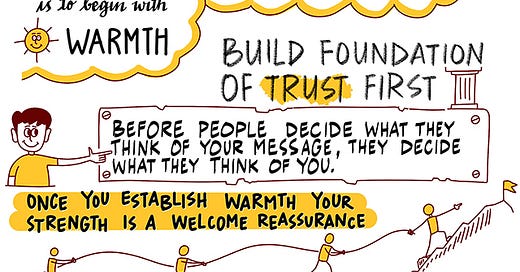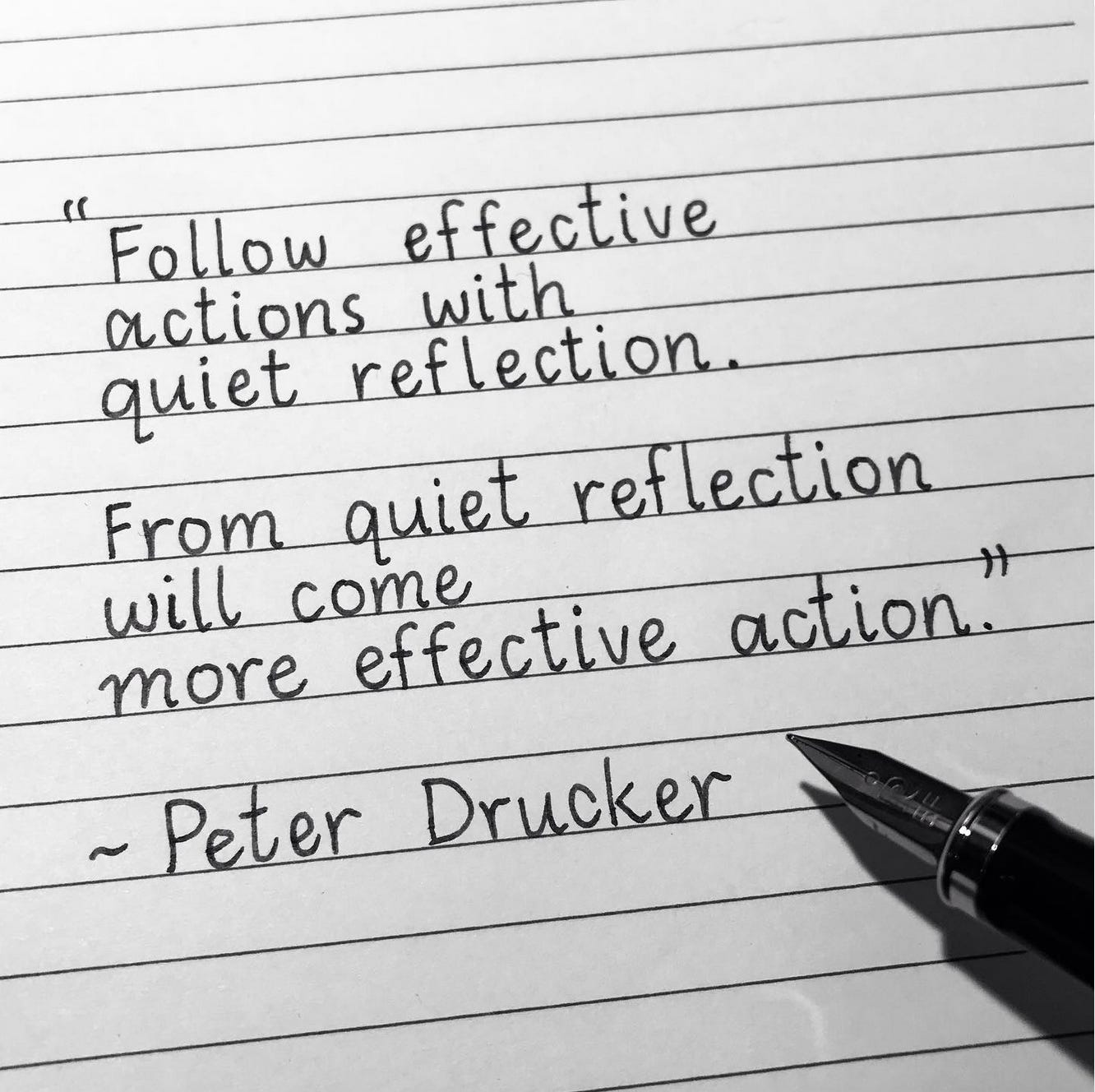Connect, Then Lead
If there is no leadership without influence, there is no influence without a strong foundation of trust.
Welcome!
In this edition, we delve into something that is very crucial for new leaders to build - TRUST - plus there’s a new sketchnote on Radical Candor for the paid subscribers.
But before we go further, consider:
Visiting my work and blog at QAspire.com (blogging since 2006)
Registering for the upcoming Visual Thinking and Sketchnote workshop happening on 21st March, 2025.
Checking out Visual Leadership Pack of HD Sketchnotes – a compilation of high-resolution sketchnotes covering 90+ powerful (and timeless) ideas to elevate your leadership and learning game. Ideal for coaches, leaders and learners.
Support my work by considering a paid subscription.
Where New Leaders Usually Falter…
When leaders take up new responsibilities of a team, they often fall in the trap of proving their might too soon in the process. Our first instinct is to show our competence and prove our fitment to the role.
This is a trap.
Over the years, I have seen many examples of new leaders and CEO’s who start by speaking very highly about their past accomplishments or dive straight into strategic plans to transform the company, without spending enough time to understand the people and the context they are in.
Strength can be the starting point of leadership journey, but ultimately strengths only shine on the foundation of trust.
Connect, Then Lead
When people trust leaders, their competence becomes a gift. In absence of trust, a leader’s competence can be perceived as a threat.
In this context, I read a classic Harvard Business Review article titled “Connect, Then Lead” by Amy Cuddy, Matthew Kohut and John Neffinger which states,
A growing body of research suggests that the way to influence—and to lead—is to begin with warmth. Warmth is the conduit of influence: It facilitates trust and the communication and absorption of ideas. Even a few small nonverbal signals—a nod, a smile, an open gesture—can show people that you’re pleased to be in their company and attentive to their concerns. Prioritizing warmth helps you connect immediately with those around you, demonstrating that you hear them, understand them, and can be trusted by them.
One of the biggest challenges for leaders is to create an ecosystem where people exercise their discretion (tapping into intrinsic motivations). Trust is a good place to start.
Vijay Govindrajan, professor at The Tuck School of Business calls it “Emotional Infrastructure” – which is an aggregation of positive feelings employees have for the organization and each other.
In a new now, a leader’s role is to build a ecosystem of engagement where people show up (read subscribe) to do their best work.
In his paper “The Emotionally Bonded Organization: Why Emotional Infrastructure Matters And How Leaders Can Build It”, Vijay Govindrajan says,
In comparison to physical and intellectual infrastructure, emotional infrastructure is the most time-intensive and the most difficult to build. Yet the factors that create emotional infrastructure are not visibly manifest to an outsider and hence it is the most difficult for a competitor to copy, yielding a sizable and sustainable competitive advantage.
Trust is at the heart of building an emotional infrastructure.
From My Journal: Drucker’s Wisdom
A New Sketchnote: Radical Candor
I was introduced to the work of Kim Scott on Radical Candor through her podcast episode with Tiffani Bova, her book titled “Radical Candor - Be a kick-ass boss without losing your humanity” and her TED talk.
Keep reading with a 7-day free trial
Subscribe to Clarity Canvas Weekly by Tanmay Vora to keep reading this post and get 7 days of free access to the full post archives.





